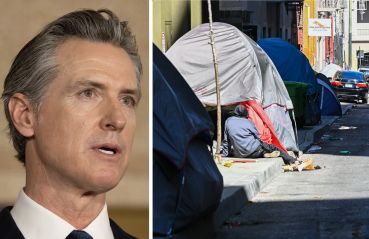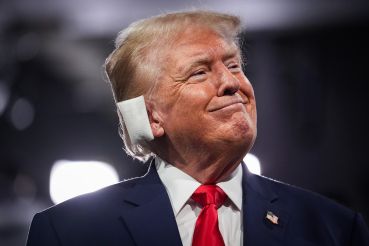David Dinkins’ Role in NYC’s Real Estate Boom, Explained
By Larry Getlen January 29, 2021 12:30 pm
reprints
The one-term New York City mayoralty of David Dinkins is often overshadowed by the flashier tenures surrounding it: the three terms of Ed “How’m I Doin’?” Koch that preceded it, and the two tough-on-crime terms of Rudy Giuliani that brought New York from trash to cash.
But the contribution of Dinkins, who passed away on Nov. 23 at age 93, to the city’s 1990s recovery is often overlooked, as the decrease in crime and the rise of the cleaned-up, Disneyfied Times Square, despite being credited to Giuliani, were both ignited during Dinkins’ tenure.
“Mayor Dinkins was critical to the redevelopment of Times Square, removing the urban blight it represented and paving the way for its revitalization,” said Carl Weisbrod, a former head of the Department of City Planning who was also the founding president of the city’s Economic Development Corporation during Dinkins’ term.
Dinkins took office at a time of high crime and deep racial strife. While he set his sights on attempting to conquer these issues, he understood the importance of a healthy commercial real estate sector toward accomplishing these goals.
“Although he had a very strong social conscience, he knew that realizing many of the social goals he had required a robust economy that was significantly driven by commercial real estate,” Weisbrod, now a senior adviser at development consultancy HR&A Advisors, said.
When Dinkins took office on Jan. 1, 1990, becoming New York City’s first Black mayor in the process, the city was still reeling from the effects of the 1987 stock market crash, carrying a $1.5 billion budget deficit.
Dinkins campaigned for a tax increase that allowed Gotham to grow the New York City Police Department by almost 25 percent, helping to lower the shockingly high murder rate in the city, which saw more than 2,200 homicides the year he took office.
He also participated in fierce negotiations with The Walt Disney Company that spurred the clean-up of the notoriously filthy and dangerous Times Square area.
“The thing that assured the Times Square project was going to be successful was his and the city’s involvement in negotiating the memorandum of understanding that secured Disney’s role on 42nd Street,” Weisbrod said.
The memo, signed on the last day of Dinkins’ tenure, cemented Disney’s $8 million commitment to renovate the New Amsterdam Theater. The city capitalized on the memo to attract other investors and brands, and the relaunch of Times Square was well on its way. “Since the end of World War II, [that section of 42nd Street] had been, perhaps, the most dangerous street in the city of New York,” Weisbrod said. “[The memorandum] was the signal that unlocked the rest of the Times Square project.”
“Rudy Giuliani tried to take all the credit, but David Dinkins was the one that foresaw all of this,” said Keith Wright, who ran Dinkins’ Harlem office when he was Manhattan borough president from 1985 to 1989, and is now director of strategic planning at Davidoff Hutcher & Citron and the New York County Democratic leader. “Dave created a good balance. That really should be Dave’s legacy, and there hasn’t been enough attention paid to that.”
Given the dire state of the economy when he took office, Dinkins made several moves that helped prevent New York from becoming a husk of empty office towers. One of the city’s essential industries, financial services, was forming an exodus when Dinkins came to power. It started as a slow trickle, but then Morgan Stanley (MS) announced it was buying a new headquarters site in Stamford, Conn. It was believed that if Morgan Stanley left, the rest of the industry would soon follow, decimating the city’s tax base.
In addition to providing tax incentives, Dinkins tasked Weisbrod with organizing an “intervention,” a collection of the city’s most distinguished names to persuade the company to stay put. Soon after, at the Rainbow Room, Morgan Stanley’s then-chairman, Richard Fisher, was confronted by a powerful collection of luminaries that included then-Cardinal John O’Connor, as well as U.S. Sen. Daniel Patrick Moynihan and U.S. Rep. Charles Rangel, the last two chairmen of the Senate Finance Committee and the House Ways and Means Committee, respectively.
Within days, Fisher reconsidered and soon negotiated the purchase of two buildings for Morgan Stanley in Times Square. The much-feared exit of the financial services industry never happened, thanks to Dinkins’ leadership.
“The core of the financial services industry stayed here and the city franchise was maintained,” said Weisbrod. “That was, and continues to be, essential to the health of commercial real estate in the city, because they’re not only a major occupant in and of themselves, but their services are critical to the commercial real estate sector.”
Dinkins also led the expansion of the National Tennis Center in Flushing Meadows-Corona Park in Queens, which saw the United States Tennis Association agree to pay $172 million to expand the center on 42 additional acres. Former Mayor Michael Bloomberg later told The New York Times that Dinkins’ deal was “the only good athletic sports stadium deal, not just in New York but in the country.”
Regarding Dinkins’ relationship with the commercial real estate industry, Wright recalled that legislation that included a form of commercial rent control had made it to the City Council with Dinkins’ support, though it eventually died on the vine.
“Commercial rents were rising at a rapid rate,” Wright said. “There were a lot of discussions about how you need a commercial rent control bill, but it was a different time back then. Crime was on the rise, and a lot of commercial buildings were boarded up. But he still had great relations with the folks that ran real estate. He knew that real estate is the engine that makes Manhattan, in particular, grow.
“So, he had good relations with real estate, but he also tried to balance it to keep things fair and equitable for folks that lived in the city of New York.”
While Dinkins’ efforts to improve New York weren’t enough to get him reelected, as the crime rate remained high despite dipping during his term, a look back at his record shows that David Dinkins may have done more to save New York City than he’s ever been given credit for.
“The one thing we all can recognize in hindsight, and certainly in the last 25 years, is that the key element to a healthy business climate and a healthy environment, generally, in the city is for people to feel safe,” Weisbrod said. “And that really started with Mayor Dinkins.”


